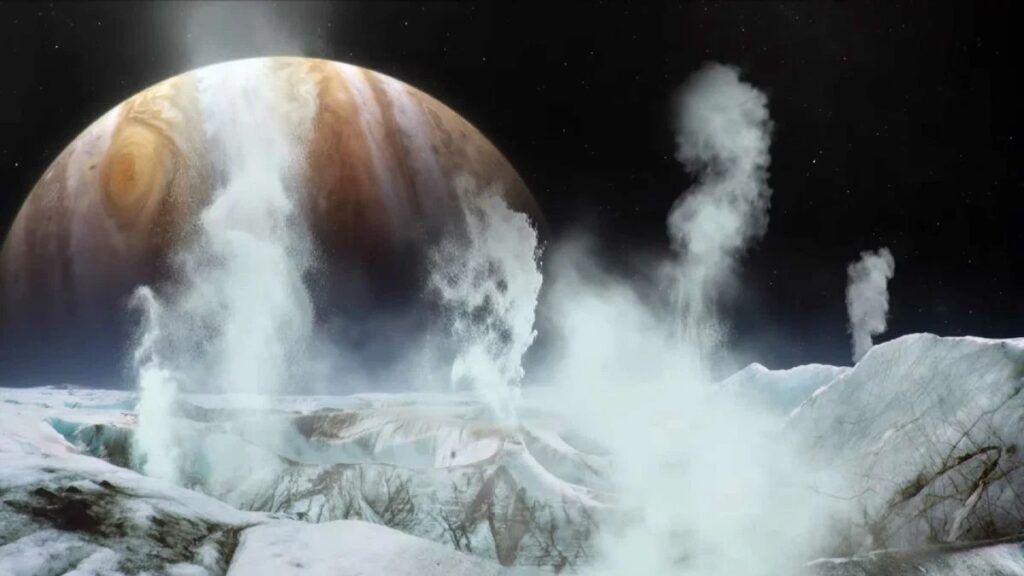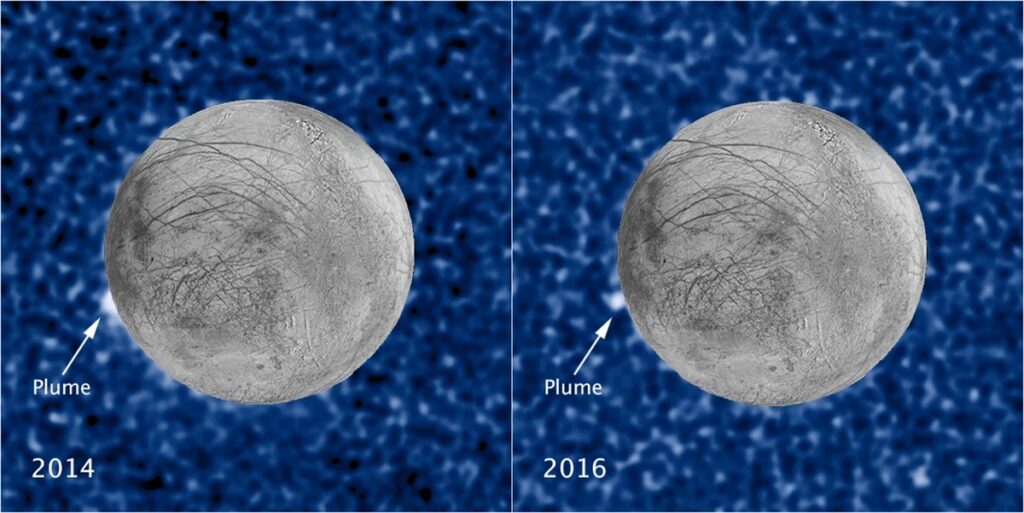
Jupiter’s moon Europa heat, geysers and subsurface ocean
(ORDO NEWS) — Under the ice “shell” of Europa , the satellite of Jupiter, most likely, there is a fairly warm ocean of liquid water.
The elevated temperature is due to gravitational tidal forces that deform the “innards” of the satellite as it moves around the gas giant.
Excess heat and pressure provide the formation of geysers, the existence of which has been confirmed.
In 2014 and 2016, the NASA/ESA Hubble Space Telescope observed geyser plumes on Europa at the same location.
This confirms the fact that geysers are a real phenomenon, periodically activating in the same region of the Jupiterian satellite.
The 2014 plume rose 48.3 kilometers above the surface, while the 2016 plume rose 99.7 kilometers.

It is noteworthy that the location of the geysers exactly matches the warmest place on the icy crust of Europa, which was discovered in the late 1990s by NASA’s Galileo spacecraft.
A warm subsurface ocean… maybe there is life there?
In October 2024, the NASA Europa Clipper spacecraft will depart for Europe , which will orbit the ice satellite in April 2030 and begin to explore one of the most interesting bodies in the solar system.
Perhaps the Europa Clipper will bring us closer to the discovery of extraterrestrial life.
—
Online:
Contact us: [email protected]
Our Standards, Terms of Use: Standard Terms And Conditions.









